The Cherry MX Board 6.0 Mechanical Keyboard Review
by E. Fylladitakis on January 27, 2016 8:00 AM EST- Posted in
- Keyboard
- Cherry MX
- Mechanical Keyboards
The Cherry MX Board 6.0 Keyboard
A glance at the Cherry MX Board 6.0 reveals a tall, aesthetically simple but very elegant keyboard. The upper body of the keyboard is solid aluminum, a quadrilateral hexahedron with rounded edges. It has a flat top, except from a slight incline where the arrow keys are. There is only one Windows key, to the left side of the Space Bar key. The Windows key to the right side of the Space Bar has been replaced with the FN key, which can be used in conjunction with some of the top row Function keys to initiate special commands, such as sound volume and backlight brightness adjustments. It is interesting to note that the backlighting can be adjusted from 0% to 100% in 1% increments, which is quite a bit overkill in our opinion.
Besides the (mostly) standard 104 keys, there are only four extra keys on the Cherry MX Board 6.0, right above the numpad. One of them is the "Cherry" key that initiates other special functions and the other three are the basic media keys (Play/Pause, Back & Forward). The Cherry key can be used to deactivate the Windows key and certain key combinations (ALT + F4, ALT + TAB, CTRL + ALT + DEL). Once pressed, the backlighting of the Windows key turns blue, indicating that the Windows key and the aforementioned key combinations have been disabled.
There are no clips or supports for the large wrist rest that comes with the keyboard. The wrist rest is magnetic, making its attachment and removal a breeze. This is particularly useful for users that do not really like the very large size of the wrist rest but do occasionally need one when they need to use the keyboard for a long period of time. The wrist rest is made of corona treated plastic and has a "rubbery" surface that is very soft to the touch, with the "MX" logo patterned across it. The softness and high grip of the surface, alongside the myriads of concavities that the logo pattern creates, make the wrist rest a real grime magnet. Thankfully, it is easily removable and cleanable.
Cherry is using half-height keycaps, with the bottom rows beveled upwards for increased typing comfort. The keycaps are cylindrical, with large main characters and small secondary characters/functions printed on them using a sharp, futuristic font.
Beneath the keycaps, we of course found Cherry's own switches. Our sample came with the soft and linear Cherry MX Red switches and these are the only switches this keyboard is available with, at least for the time being.
The backlighting of the MX Board 6.0 is exceptionally bright. At its maximum setting, the backlighting is clearly visible even in a sunlit room. It would be intolerable to have the backlighting at maximum inside a dark room or during night time, but it can be easily adjusted with outstanding precision down to the setting a user prefers. Note however that only the main character of keys with secondary functions/characters is being clearly illuminated, as the secondary character is at the bottom of the keycap and the key's axle is blocking the LED's light. All of the keys have only red LEDs, with the exception of five keys (FN, Caps Lock, Num Lock, Scroll Lock & Windows Key) that have a dual blue/red LED. When the three Lock and the FN keys are activated, the backlighting simply turns blue. For the Windows, the blue backlighting oppositely means that it is deactivated.
As we mentioned before, the top cover of the Cherry MX Board 6.0 is made of aluminum. It is very thick, with a minimum thickness of 2.3 mm across the support between the function keys and the main keys. The mechanical strength of the aluminum frame is startling, as it would not bend or twist the slightest bit, even with tens of kg force. It may very wel take the full strength of an average adult to cause any damage to it.
Beneath the aluminum frame, we found a standard keyboard PCB, with the mechanical keys mounted on a steel support frame and soldered directly onto the board. There is nothing special about this, as this is the standard setup inside the vast majority of mechanical keyboards available today. We could not identify the controller of the keyboard as it is on the other side of the PCB and it would take a fair time of de-soldering to get to it, but it does not really matter in this case, as the Board MX 6.0 keyboard has very few extra functions and it is not reprogrammable.



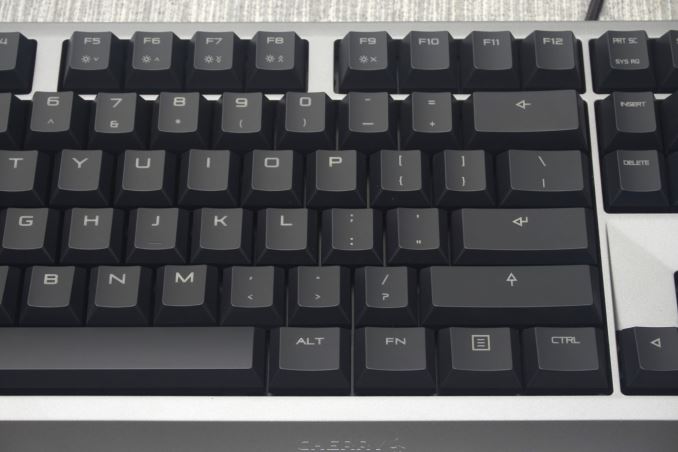
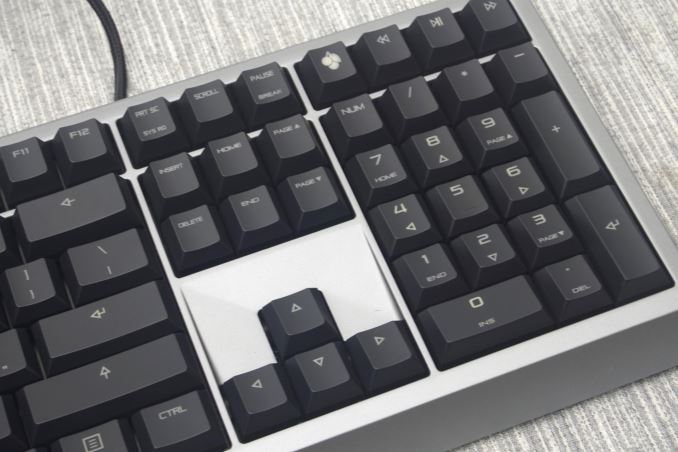
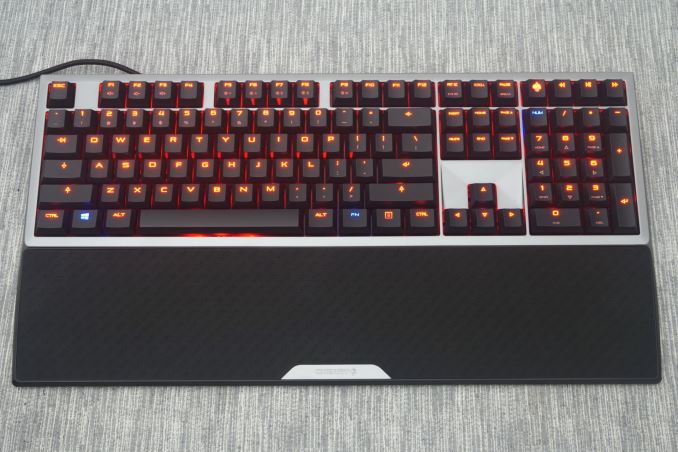
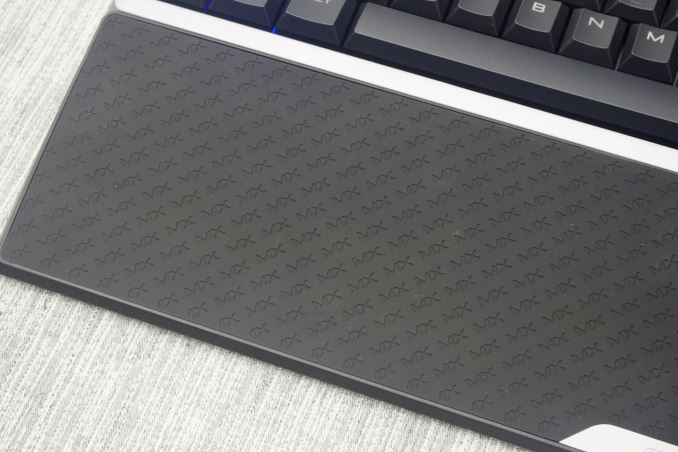
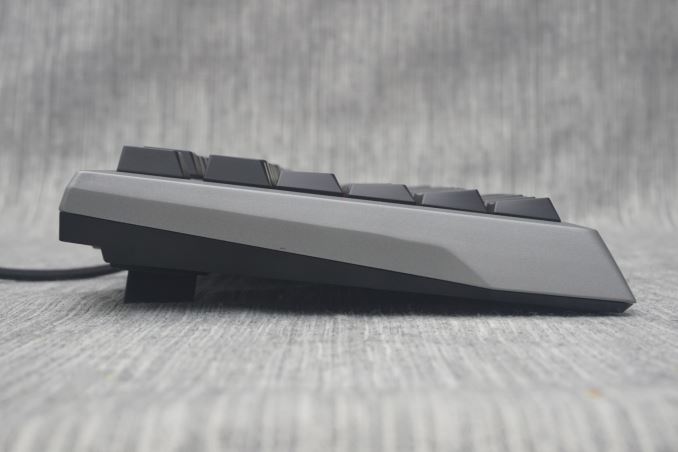

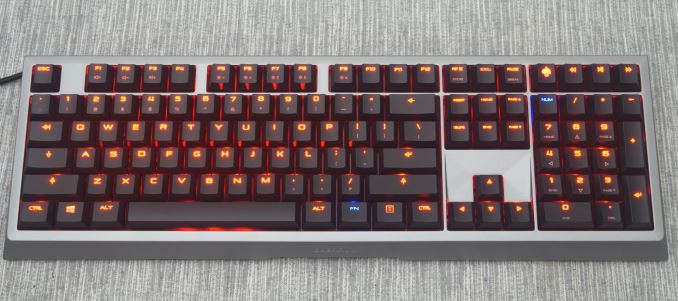
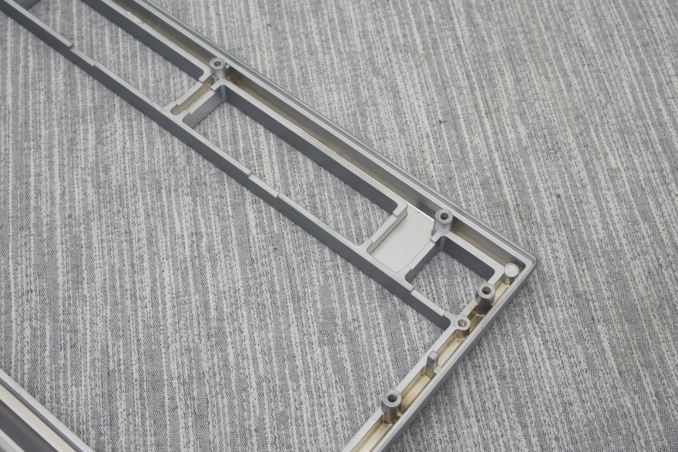
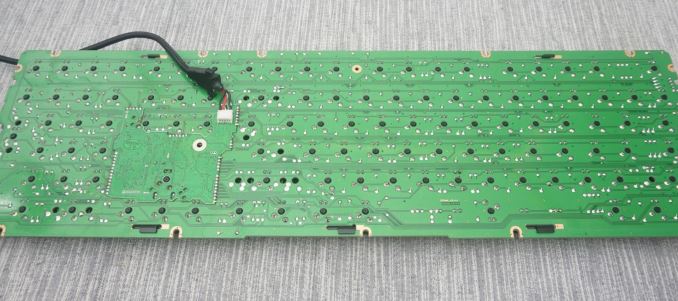








72 Comments
View All Comments
BurntMyBacon - Thursday, January 28, 2016 - link
@BrokenCrayons: "As long as you end up at your desired destination, the point of a car is accomplished."For most people I've met, including myself, you're not wrong. For some people, the point of travel isn't necessarily where you are going, but how you get there. Often times this is an emotional response, but sometimes this is a calculated, well thought out process. Presentation can be extremely important, for instance, to a CEO or politician. I don't really think it's applicable to keyboards, but it is something to consider in other areas.
Another point of interest is that a car may get you from point a to point b just fine, but it can be stressful if it sounds like it is going to fail while driving, one of your cylinders are misfiring, brakes squeal every time you brake and don't work well, gas stalls initially on acceleration, horn honks when you turn on your blinker, etc. Putting potential safety issues aside (cars aren't a great comparison here) you can still make it from point a to point b for years with one or several of these problems.
@BrokenCrayons: "The other things a car imparts are emotionally driven. The idea that you feel better about your drive or look better in other peoples' minds when they see you and so forth are all secondary feelings."
I never really got into the whole emotional purchasing that seems to be a deep and prevalent first world problem, but it is quite common and you shouldn't be surprised when some manufacturers take advantage of it.
@BrokenCrayons: "In the case of an economy car that'd sell for $15k new, then the comparable car would not be a "decent mid-range" one but something that retails for $200k."
This actually is a good enough comparison to illustrate the merits of a mechanical keyboard in general (leaving out the comparison between this keyboard and other mechanical keyboards). People who buy $15K economy cars tend to be people who use it to get basic tasks done (drive to work, pick up groceries, etc.). People who buy $200K cars (lets use muscle/racing cars as an example) tend to be people who have excess money such that cost isn't an issue, are emotionally driven and want what they want regardless, or people who drive vocationally ($200K is a bit low in this case). We've discussed the first two, but the professional driver buys the expensive car because the better acceleration, handling, resistance to breakdown, etc. all affect his vocation. Similarly a semi tractor trailer driver buys his multi-hundred thousand dollar rig for its towing capacity, high torque, resistance to breakdown, etc. that a budget car driver has no need of. Professionals in the keyboard space may be typists or sponsored gamers that can appreciate the consistency, tactile response, durability, etc. that a mechanical keyboard may provide to help them get their job done more efficiently. Given the relatively low cost (even at $200) compared to other tools, many amateurs find these keyboards desirable and easily accessible. In some cases, it may even improve their experience similar to how acquiring a Ford F-250 will allow you to haul something that a Ford Ranger would not, despite the fact that they are both capable of hauling things.
All that said, I think these higher end mechanical keyboards will eventually make their way below the $100 mark given the number of mechanical keyboards already typically going for $80 and sometimes as low as $50. They would certainly be more interesting to me at this price point.
JohnMD1022 - Saturday, February 13, 2016 - link
I spent many years writing code on high quality IBM keyboards, so, I prefer the feel of a good mechanical keyboard rather than the feel of the rubber dome switches.It is as simple as that.
We have 12-15 IBM Model M keyboards here, one DAS, and 2 Razers. There are a pair of rubber dome keyboards for use at the workbench and i keep a few around in case someone needs a keyboard.
zeeBomb - Wednesday, January 27, 2016 - link
What is the best Cherry MX Brown or Red keyboard I can get for under 100?baobrain - Wednesday, January 27, 2016 - link
Cooler Master makes some good ones, you sometimes can find a K70 red for under $100. I got a Rosewill keyboard for 80 bucks with MX blues a few years ago and it's real solid.kent1146 - Wednesday, January 27, 2016 - link
>> What is the best Cherry MX Brown or Red keyboard I can get for under 100?Coolermaster CMStorm keyboards. I'm very partial to the tenkeyless (TKL) versions, like a CMStorm Quickfire TK.
A TKL keyboard is intended for gaming. It chops off the NumPad, so that your left arm (WASD) and right arm (mouse) sit closer together in a more natural position. I'm particular to the CMStorm Quickfire TK, because it has a dual-function NumPad / NavKey area in case you need to ever use the NumPad.
Choice of Cherry MX Red, Brown, Blue, Green:
http://www.amazon.com/CM-Storm-QuickFire-TK-Mechan...
Murloc - Wednesday, January 27, 2016 - link
without the NumPad you can't use many of the trainers out there.Although I agree that for any other use (except data insertion of course but only office drones do that anyway) not having the numpad would really help the ergonomics.
ImSpartacus - Wednesday, January 27, 2016 - link
See http://pcpartpicker.com/parts/keyboard/#s=3&so...I own a coolermaster tenkeyless ("Rapid" maybe?) with mx browns. I got it for like $60 and it's a nice simple keyboard. No fancy gaming stuff, just a solid keyboard.
ImSpartacus - Wednesday, January 27, 2016 - link
Nevermind, I own a quickfire tk. It's surprisingly sturdy and hasn't failed me in its two years.theduckofdeath - Thursday, January 28, 2016 - link
I have the Cooler Master Storm QuickFire TK with brown switches. It's a really nice keyboard with backlit keys. The subtle and compact design are the main reasons I got it. You get 3 LED light settings, which is one more than I need, on/off/"pulsating". The build quality is really nice. Extremely sturdy (no flex at all) and nice, distinct feel to the keys. I probably would have preferred the red switches, for the minimal sound level but the brown switches are quiet enough. I opted for brown keys simply because that model comes with white backlight instead of red.buxe2quec - Wednesday, January 27, 2016 - link
You don't have to buy the top-end. I bought a Cherry MX 2.0 (no LED, no rest, basically the same for everything else) at 60 Euro (European layout too). I won't go back. Of course no customisation. If you want it customised there are alternatives like WASD keyboards.You don't need to be rich to buy a good mechanical. People brag about the expensive ones and justify themselves with "but it was worth". Well, the 60 Euro one (with the same switches and same sturdy metal frame) is 1/3 and worth anyway.